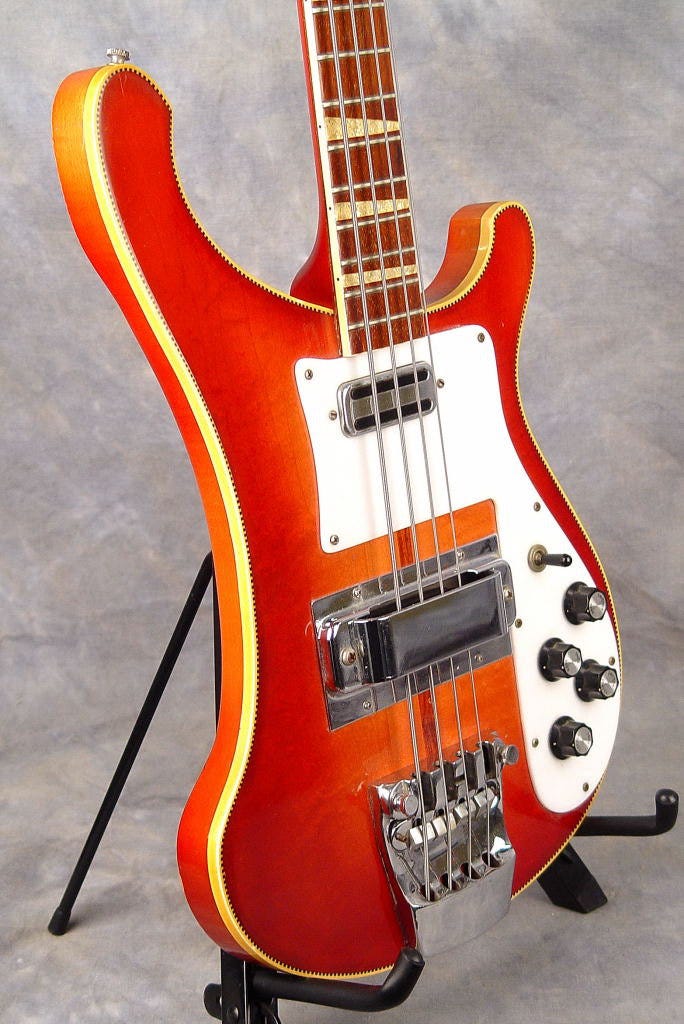
Glueglo. What is it, what caused it, and when did it happen? Let’s see if we can’t answer those questions quickly, but with a little more depth than you usually get. Here we go!
So what is Glueglo? It is a term applied by collectors to guitars where the black colorant from the checkered binding has bled into the wood it touches, staining the wood and giving the body an inconsistent dark ring around the edges—usually on Mapleglo guitars. So “glue”, because it was caused by some interaction between the binding and adhesive agent, and “glo” because that dark ring is similar to the sunburst effect found in “Fireglo” and “Autumnglo”. Easy enough! All guitars made during the Glueglo era are subject to the issue, but it’s (obviously) most visible on Mapleglo guitars as there is nothing to “hide” it…but you can find it on Fireglo guitars if you look closely—and occasionally even Burgundy!
So what is the Glueglo “era”? Online you’ll read that it happened over a “fairly brief period”, but I can find Glueglo examples on the register from January 1971 all the way to November 1972—and there may be more on either end of that window—so it’s a bit more than “fairly brief”!
So what happened during this period to create the Glueglo effect? A change in manufacturing process. Here’s the thing to know about the application of binding: acetone is commonly used as a binding agent. Why? Well, it softens the binding—in fact it actually melts it. Drop a small piece of binding into a beaker of acetone and it will completely dissolve. Applying acetone to one side of the binding allows it to “melt” and fuse with the wood as it dries. You can, and many people do, use straight acetone alone to durably attach binding to a guitar.
But you can also use a paste made of acetone with binding material melted into it—and that’s what many people who use acetone rather than glue do. And that’s what Rickenbacker did before and after the Glueglo era. During the Glueglo era they changed to the straight acetone method—probably to save money. But that straight acetone could be “too strong” for the black colorant in the inner checkered binding, and over time the colorant leached into the wood. And voila, you’ve got Glueglo!
That process didn’t happen overnight. Clearly it took a while for the problem to appear on finished guitars and the process to get changed back. But it did, and they did. By now, the effect is as bad as it’s going to get—and it is cosmetic only. “Structurally”, there is nothing wrong with the binding or the bodies on Glueglo guitars. And the amount of discoloration can vary from very slight to severe—and not every Mapleglo guitar from this era is afflicted. If your guitar from this era isn’t Mapleglo, this is probably a non-issue. But don’t think you can refinish it as a Mapleglo—sand it down and you’re likely to get a nasty surprise! And that’s the deal with Glueglo.




Front photo shows Glueglo on bass horn: https://www.rickresource.com/register/user_images/32260/2-fullsize.jpg
Back in the late 70s I bought a used MG 4001 that had that “dirty ring”. One of my bandmates worked on guitars and he did a deep blue finish just on the front of the bass,taping the binding. It looked really good, but I don’t have a great picture of it. I sold it after a few years.